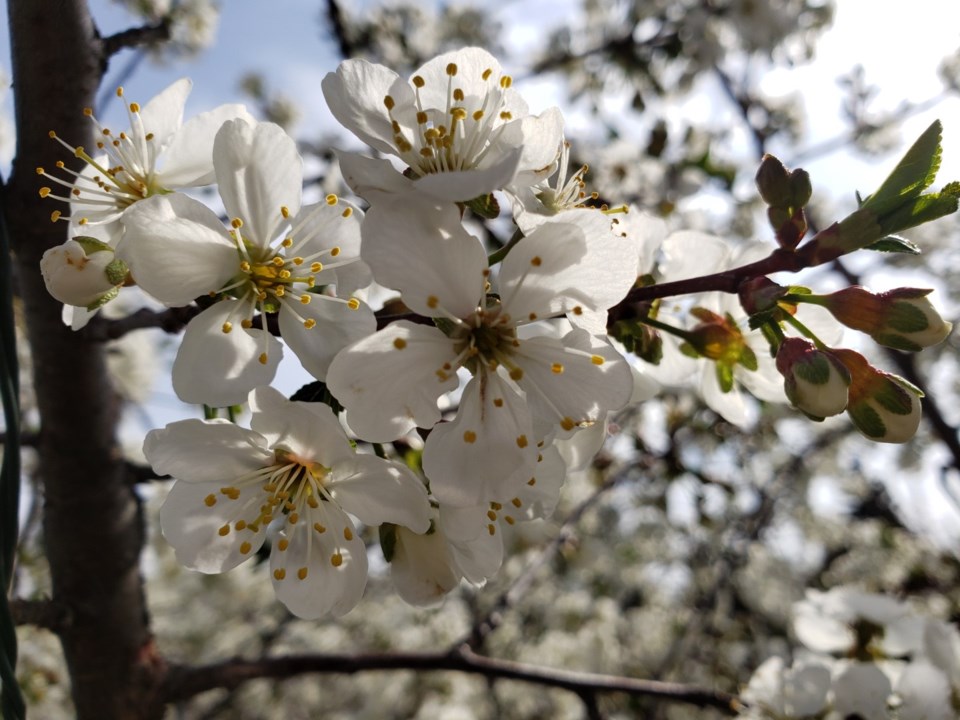Our focus for the past number of columns has been on growing food and most recently growing fruit. To understand the complexities of growing fruit we need to understand a bit more about the birds and the bees or more scientifically, pollination.
It is sometimes hard to believe that there is more to the beauty and scent of a flower than our enjoyment. However, the primary purpose of a flower is to seduce insects to pay a visit and in that process, pollinate the flower so it is possible to continue life and allow the flower to produce seeds. Take the apple tree as an example – if not for the bees our efforts to grow these fruit would be “fruitless”.
This process of pollination that occurs with the visit of a bee or other insect is the actual transfer of pollen grains from the stamen (male part of the flower) to the stigma (female part of the flower). If this results in successful fertilization, then the wonder of life continues. The previously undeveloped seeds that are present in the ovary of the flower will start the development into viable seeds. Again using apple trees as an example, this development of viable seeds also begins the development of the apple itself.
Some plants will also be pollinated by things other than bees. For example, most of the trees we commonly use for our urban forests rely on the wind for that wondrous transfer of pollen. Interestingly, these trees do not have very showy flowers as the wind is not enticed by beauty and scent like an insect.
Now that we have simplified the process of pollination – let’s make it more realistic as Mother Nature is of course in reality more complex. Some flowers are what we call “perfect” and contain both male and female parts. But, some flowers contain only one sexual part so are distinctly either male or female. Those containing only pistils are considered female while those containing only stamens are considered male.
Some plants will have both male and female flowers on the same plant. This is termed a monoecious plant and a good example of this would be the pumpkin. A plant that has only male or female flowers is termed dioecious. At this point, you may be wondering why it matters who is monoecious and who is dioecious – but it is quite important. Take the poplar tree as a great example of why this does indeed matter. It is usually in June when the female cottonwoods (a type of poplar) produce a veritable blizzard of fluff (which contains the seed) – a large problem when enjoying the outdoor patio, especially if allergic! A simple way to solve this problem is to grow only the male clones which of course do not produce seed and voila – no fluff.
Just to add one more complexity, some plants require cross-pollination (like apples) while others can be self-pollinated. For an apple (blueberry, hazelnut and most plums) to be produced they require the pollen of a genetically different but closely related plant for fertilization to occur. Hence, the directive you have likely heard often that says that you need two different apple trees to get fruit!
The circle of life is complex regardless of the species involved. I hope you have enjoyed this brief foray into the wonders of renewal in a plant’s life! Watch for the next articles on more fruit you can grow successfully! Happy gardening this summer…..and may you question “why” just a little bit more often!
Hanbidge is the Lead Horticulturist with Orchid Horticulture. Find us at ; by email at [email protected]; on Facebook @orchidhort and Instagram at #orchidhort. Tune into GROW Live on our Facebook page or check out the Youtube channel GROW




